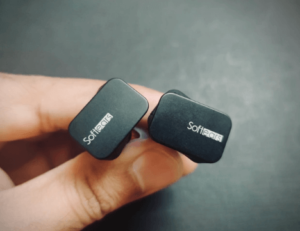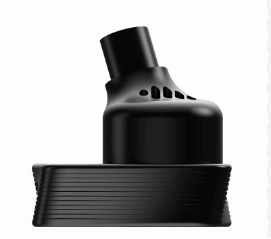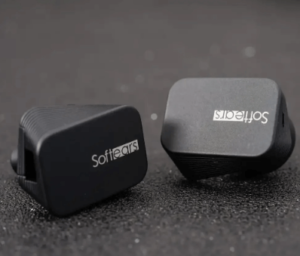The Softears Twilight iem appears to be a lineup replacement for the more expensive, heavier, and now discontinued Turii. Features an all-new 10mm DLC domed single dynamic driver.
The housing retains the same shape as its predecessor, but the weight of the same shell has been reduced by 60%. Each housing now weighs just 6g each. In fact, they feel light in the hand.
Additionally, like its Turii (and Moondrop Illumination) predecessors, the Twilight offers fairly good ventilation with five slotted front vents.
As a result, the isolation can take its toll, and the other person may be able to hear what you are listening to in a very quiet environment.
Softears Twilight IEM Review

The Softears Twilight is a single 10mm dynamic driver universal IEM, but it is not the same driver as the one inside the original Turii.
It took approximately 2000 man-hours to develop this from scratch, including the new DLC or Diamond-Like Carbon dome with FreeEdge PU or polyurethane suspension supported by a 0.35mm Daikoku high-pressure voice coil.
You can see that it’s a very unusual-looking monitor, and we’ll take a closer look at its design below. But with the ventilation requirements of new drivers, there is a method to madness.
Ventilation is so important for a dynamic driver that the internal shape of the Twilight shell had to have a matching volumetric size that, like the Softears pitch, has a positive factor in terms of dynamic range and critical sensitivity.
This cavity is subsequently cushioned to prevent unintended resonance in the audible output.
And, at least on paper, it looks like Softears has an efficiency equation that lines up with a pretty impressive rating for a dynamic driver of 16Ω and 116dB @1kHz for SPL. You can read more about how it actually performed in real-world testing on page 2 of this review.

Build
The body is made of high-grade aluminum alloy for the aviation industry, making it sturdy yet lightweight. After processing using high-precision 5-axis CNC engraving machine tools from China, post-processing of the anodizing process is carried out. Compared to Turii, the weight is reduced by 60%, and one side weighs only 6g.
Design
Two things that stand out about Twilight are its design and the materials used to create it.
This is a very unique looking monitor with a rectangular wedge form factor on the front and the main driver housing below it combined with a nozzle running vertically across the front.
The bulbous main driver body underneath has four small mesh grill ports next to the main nozzle location next to your ear for good ventilation.
I wouldn’t exactly call it a compact IEM, but its profile means something very different. From some angles it may look quite slim, but from other angles, it may project a profile that is slightly taller than average.
Perhaps the most unusual aspect is that the connector location is on the top of the rectangular plate rather than on the side. This better fits the way monitors are designed.
As you can see in the comfort and isolation section, this means that the fit is vertical rather than horizontal, or taller than wide.

The materials and finish are excellent and the quality is good. This three-piece shell is made from 5-axis CNC machined aluminum alloy and is much lighter than you might expect at 6g per shell.
Every line is clean, every cut looks accurate, and while it doesn’t have a smooth resin-like finish, the corning is rounded enough that it won’t be used as some kind of dwarf weapon.
What I also appreciate is the clear white channel markings on the interior rather than the hard-to-read etchings.
Comfort and isolation
Now, let’s go back to the connector placement I mentioned earlier. Because they are located on top of the front wedge plate rather than on the sides,
when the Twilight shells are placed on your ears, they run from top to bottom or long and narrow rather than wide and horizontal upon initial insertion.
However, once positioned, you can twist it forward slightly to sit more at an angle. The final placement feels more natural to me and actually makes it sit much more securely than it would in an upright position.
I found the Twilight shell to be very comfortable compared to the aluminum shell due to its narrow vertical placement.
Unless you have a strange ear, it is highly unlikely that the shell will press on the concha or external ear. The only part that touched my ears during testing was the cable itself, which is very typical for IEMs.
The lack of circumference means that the nozzle and supplied eartips play a significant role in Twilight’s final output and how securely it sits in your ear. Unfortunately, the isolation level is below average but I wasn’t at all surprised as there are plenty of ventilation ports.

Stock cable
The Twilight uses a 1.2m 6N OFC cable with a 4-core construction terminated with 4.4mm Pentaconn balanced termination and on the other side a standard 2-pin 0.78mm connector that slots neatly into a recessed port on the top of the shell.
Like the rest of the cable, the jacket is finished in piano black and has a TPE-like feel with an elastic heat wrap on the connectors to maintain memory and stay in place well in your ears.
The braids aren’t too bad, but sometimes after a few uses, they can look a little tattered due to the long throw which can cause some looseness and loops.
Microphonics are low and very low, but the partially low level of passive insulation means that not much noise actually travels through the cable to your ears. Splitter damping comes into play in that respect.
Talking about the splitter, its design is very attractive with its angled trapezoidal form factor making it very easy to hold while in use. To my eyes too, the aesthetic is very consistent with the Twilight shell. But there is no bib. sorry.
Both the Twilight stock cable’s plugs and connectors are finished to match the smooth, low-profile barrel and feature an additional 3.5mm TRS pigtail adapter that plugs right into the corresponding 4.4mm jack for use with SE terminations.

Tips
You get a decent range of ear tips with the Twilight, which features a mix of single-flange silicone and a variety of tightly contoured foam tips that feel almost like a hybrid design.
There are a total of three variants, all available in three sizes to suit small, medium, and large ears. The first thing that catches your eye is the three pairs of translucent U.C. Or for ultra-clear tips, a set of 3 black single-bore silicone followed by foam tips.
Now, the goal is to get the Twilight nozzle as far down the ear canal as possible, so I’ll set aside my general size preferences here.
The further down you go, the closer you get to the second bend of the ear canal, where the IEM’s audio signal is generally clearest. The deeper you go into the root canal, the narrower the root canal is, so for deeper insertion,
we recommend shooting with the smallest tip size on the Twilight.
This makes a huge difference in terms of sealing and quality of monitor performance. With a large tip, the nozzle is so far from the eardrum that the sound loses all bass effect and dynamics, and leaving out the foam doesn’t improve separation.
The smaller U.C. Or a regular silicone tip of medium size did the opposite for me.
